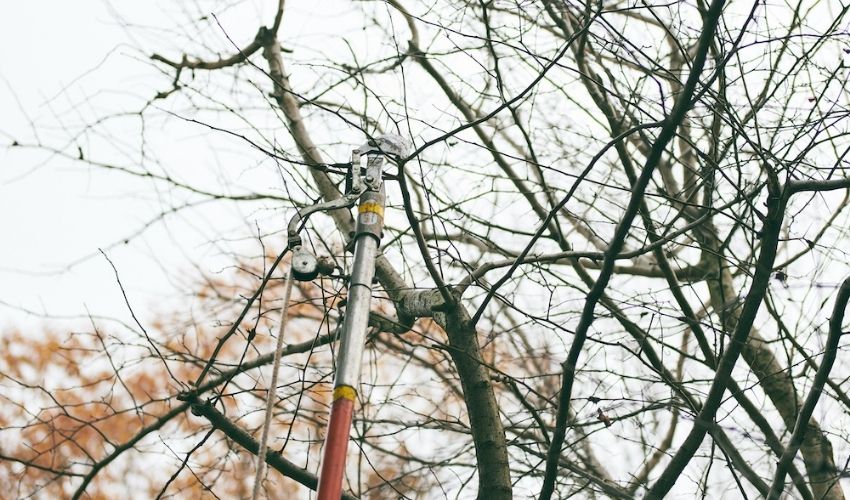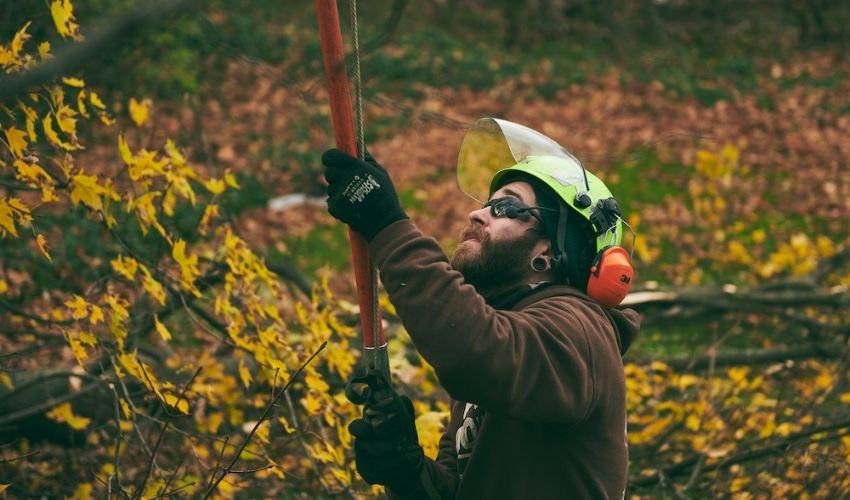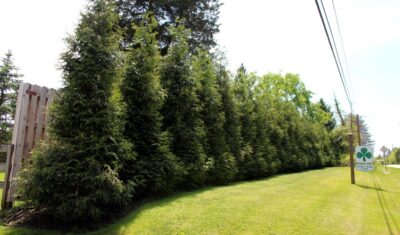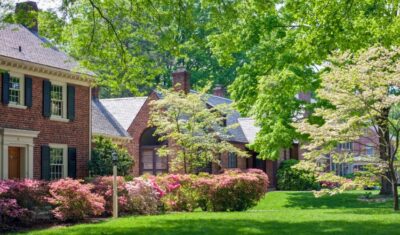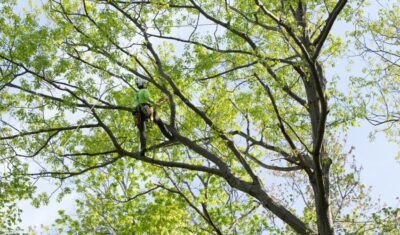It’s a common misconception that tree maintenance cannot be done during the winter months, or that tree care companies don’t operate during this time of the year.
The reality is that winter is a good time for pruning and tree removal services. In fact, some major pruning work should only be done during the winter, such as pruning fruit trees to maximize fruit production.
During winter, trees and shrubs enter a state called dormancy. Leaves fall off deciduous plants and trees take a “rest” until warmer spring temperatures prod them into putting on a new flush of growth.
Pruning during dormancy (called “dormant pruning”) has several benefits, both for your trees and for you.
6 Reasons Why Dormant Pruning is Good For Your Trees
1. It’s Easier to Evaluate Tree Structure in Winter
After the leaves have dropped in the fall, it’s easier to see the structure of your trees. For a trained arborist, it’s also easier to identify dead or dangerous branches. This lets us determine whether or not pruning is needed to keep your trees safe and looking their best.
If you’re unsure whether or not your tree would benefit from pruning, winter is a great time to call your Independent Tree arborist for a tree inspection.
2. Your Tree Will Look Better in Spring
Late winter is a great time to prune, contain, or rejuvenate overgrown shrubs and trees. Any branches cut back during the winter will be able to recover quickly in spring with new growth. This will also minimize the amount of time you’ll spend looking at a plant that looks like a bunch of sticks after rejuvenation pruning.
3. Dormant Pruning Avoids Spreading Disease
Winter pruning can also avoid spreading some serious diseases that are active and spread easily during the spring and summer growing seasons. For example, Dutch elm disease, oak wilt, cedar hawthorn rust, and fire blight all spread quickly during the growing season.
During winter, the bacteria, fungi, parasites, and insects that cause and/or spread disease are either dead or dormant. As a result, diseases are less likely to be transmitted by winter pruning.
This is why we prune vulnerable trees, such as oak and elm trees, only during the winter (with exceptions for safety pruning when needed).
4. It’s More Efficient to Prune Trees in Winter
Here in Northeast Ohio, the ground often freezes in winter. Frozen ground lets us bring in heavy equipment without damaging your landscape, resulting in lower costs, faster work, and better outcomes. This is especially true for large pruning jobs and tree removals.
5. Pruning in Winter Causes Less Stress for Trees
Because the tree is dormant, winter pruning doesn’t stimulate new growth. In contrast, any pruning done just before dormancy (such as during late fall) can be killed by cold weather, damaging and disfiguring the tree.
Research shows that pruning before buds open in spring leads to “optimum wound closure.” Trees are able to heal from pruning cuts before warmer weather brings out destructive insects and pathogens.
6. Dormant Pruning Prevents Winter Damage
Damaged, dead or dying trees can be dangerous in winter, particularly when we get significant amounts of ice or snow. Dormant pruning makes them safer and can also rejuvenate weaker trees by removing dead and diseased wood.
A Note About Pruning Spring Flowering Shrubs and Trees
Dormant pruning will remove the flower buds on early spring-blooming plants. If you want to see the tree or shrub bloom in early spring, it’s best to delay pruning until just after it’s finished flowering.
What About Spring & Summer Pruning?
While winter is a great time to prune, that doesn’t mean that pruning during spring and summer isn’t good for your trees. It simply offers different benefits and is done for different reasons, such as:
- Taking care of deadwood that isn’t easy to identify in winter. While arborists can usually identify deadwood, on some tree species it’s more difficult to tell whether a branch is dead when the tree is dormant.
- Removing damaged or diseased branches that pose a safety hazard or could compromise the tree’s health.
- Improving the overall look of the tree once it’s leafed out; the weight of leaves can change the tree’s shape.
- Opening up the tree to increase air circulation or allow more sunlight into the interior.
- Raising the canopy to improve your view.
- Pruning shrubs and trees that have grown too large or are getting in the way.
Many of these pruning activities are done during the growing season because the issues often are not obvious until the trees have leafed out.
Speak with one of our arborists about a customized pruning plan based on the current needs of your property. Over the long term, proper pruning can help promote the health of your trees.
Read More
Schedule Your Winter Pruning
Now that you know the benefits of winter pruning, contact Independent Tree to schedule your professional tree pruning or trimming this winter.Recent Articles
Topics
About The Author

STAY IN THE LOOP
WITH OUR
LATEST UPDATES
"*" indicates required fields

